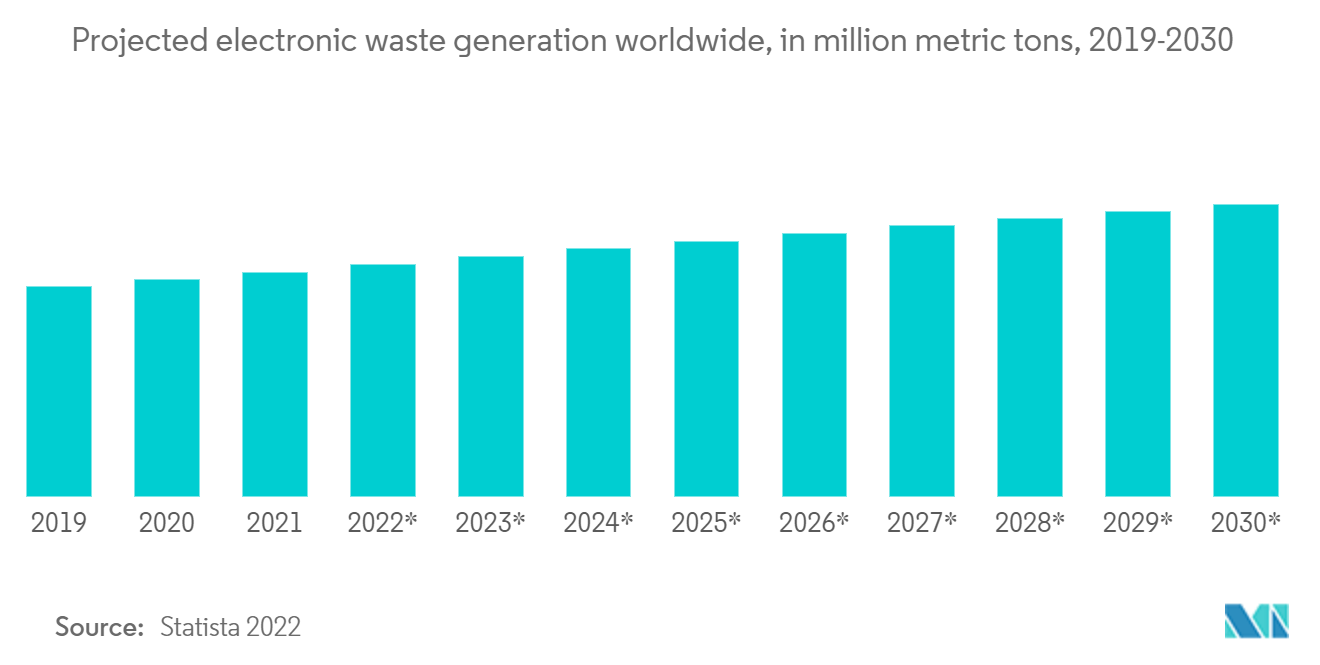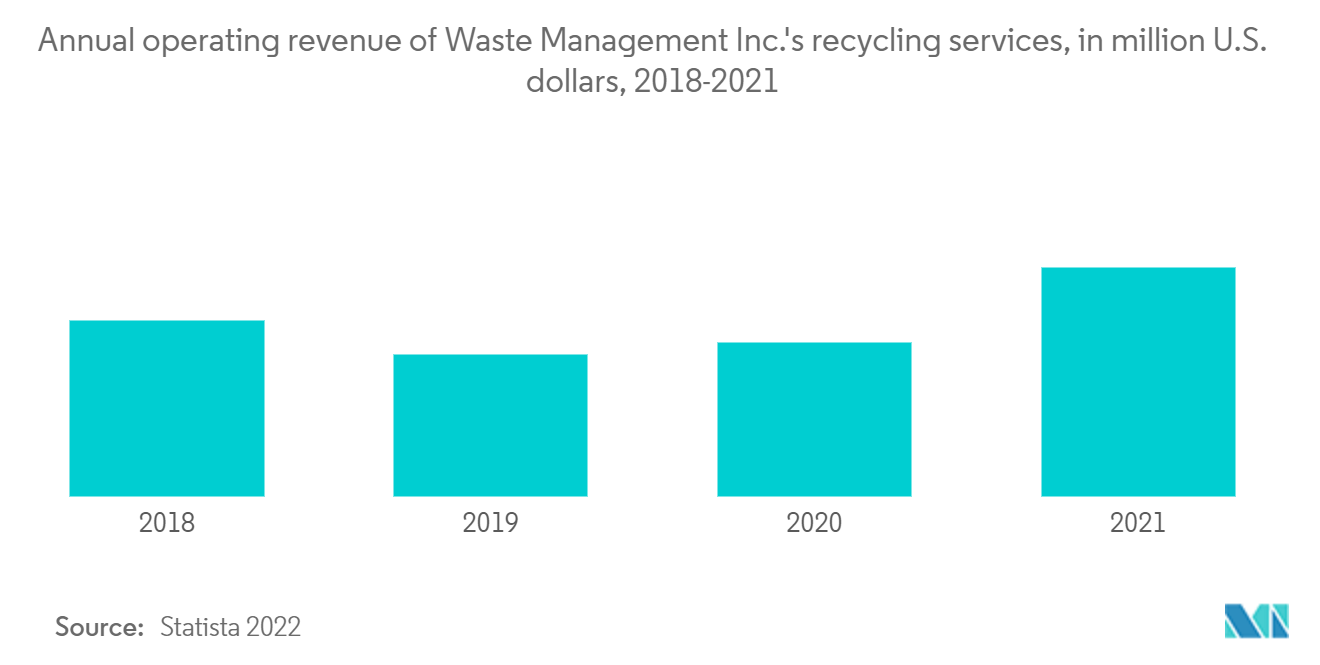Market Trends of Global Waste Management Equipment Industry
This section covers the major market trends shaping the Waste Management Equipment Market according to our research experts:
Rising global waste generation is likely to result in the need of waste management equipment
The 2022's Global Waste Index from Sensoneo, reports Turkey is at the top of the list as the least environmentally friendly waste management country, with 47kg of waste per capita recycled and 176kg per capita of waste disposed of illegally each year. Most waste is generated in the United States. Each US citizen currently produces 811kg of waste, and around half of that ends up in the landfill. Meanwhile, just 95kg of that is incinerated.
As per the 2022's Global Waste Index, Colombia produces the least municipal waste, at 243kg per capita while the disposal system in Chile recycles only two kilos per inhabitant. No other country recycles less, 417kg of waste per capita ends up in landfill and is disposed of in a particularly environmentally harmful way. Iceland's waste management has worsened the most since the last Global Waste Index. According to the 2022's Global Waste Index, waste production in Iceland increased by 7% since 2019 and 68% less waste is recycled. While Switzerland is the only country that does not send any waste to landfill. The Swiss produce 706kg of waste per capita, of which 333kg are incinerated and 210kg is recycled.
Globally, about 400 million tons of plastic waste are produced yearly. In 2021, in the U.S.A, 40 million tons of plastic waste is generated of which only 5% to 6% or about two million tons were recycled. More than 50 million tons of paper were recovered for recycling in 2021, achieving a 68% recycling rate and 91.4% of corrugated cardboard was recycled. About 110 million glass bottles are thrown away every day in the U.S., of which only one-third get recycled as per the study done by the World Economic Forum.
The Food and Agriculture Organization of the United Nations in its latest report that the global volume of food wastage is estimated at 1.6 billion tonnes of "primary product equivalents." Total food wastage for the edible part of this amounts to 1.3 billion tonnes. Food wastage's carbon footprint is estimated at 3.3 billion tonnes of CO2 equivalent to GHG released into the atmosphere per year. Home composting can potentially divert up to 150 kg of food waste per household per year from local collection authorities.Developing countries suffer more food losses during agricultural production, while in middle- and high-income regions, food waste at the retail and consumer level tends to be higher. The direct economic consequences of food wastage (excluding fish and seafood) run to the tune of USD 750 billion annually.

Growing concerns of recycling industrial waste fueling the market
Municipal solid waste management (MSW), which is waste generated from companies, buildings, institutions, small businesses, houses, and yards, often comprises less than 5% of the total amount of waste produced in a country in 2021. For the same time period, between 30% and 35% of the total amount of generated waste in most developed countries is attributed to building sector activities such as building construction, renovation, and demolition processes, according to the official EU statistical data.
According to United Nations, every year, an estimated 11.2 billion tonnes of solid waste is collected worldwide and the decay of the organic proportion of solid waste is contributing to about 5% of global greenhouse gas emissions. It is estimated that less than 20% of global waste is recycled each year and rich countries often export recyclables to poorer nations. One-third of recyclables in the US are shipped abroad. The UK estimates that 46% of its recycling goes to countries like Turkey, Poland, and Malaysia.
Recycling rates fell across Europe, Asia, and the US since the onset of the COVID-19 pandemic. But the pandemic also produced a surplus amount of new waste in the forms of PPE and single-use items. A study from the Proceedings of the National Academy of Sciences (PNAS) showed that the pandemic generated over 8 million tons of plastic waste around the world and over 25,000 tons of that waste entered the ocean.


